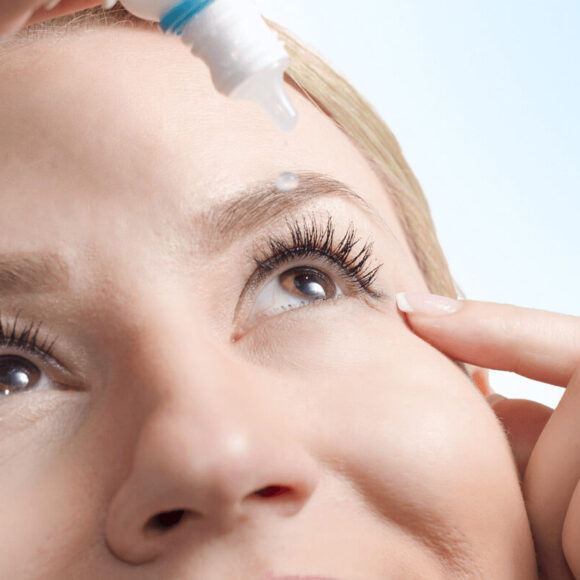There isn’t a cure for dry eyes,51 but there are plenty of things you can do to help relieve the symptoms. Taking regular breaks from screens, keeping your eyes clean, avoiding eye strain and using a humidifier can help some people.52 You could also consider using eye drops such as Cationorm®. Find out about treatment options.
From eye drops, to gels and ointments, there are plenty of treatment options to choose from, including Cationorm®, an eye drop specifically designed to treat the symptoms of dry eyes. You can find out more about Cationorm®, or speak to your pharmacist for more information.
It might seem odd, but overly watery eyes are actually a sign of dry eyes too. It happens when the body overcompensates for the dryness of the eye’s surface by producing too many tears.53 Watery eyes can be just as irritating as dry eyes, but treatment is simple, if a little counterintuitive: Because the root cause of your watery eyes is caused by dryness, treating them with an eye drops such as Cationorm® can help alleviate symptoms.
If you’ve tried using an over-the-counter treatment, such as eye drops, for a few weeks and your symptoms are still not improving or are getting worse, then it’s a good idea to speak to your ophthalmologist, pharmacist, optician or GP.
During and after the menopause, the body produces less of certain hormones which affects the fluid and oil-producing glands in the eyelids. This can reduce the quality and quantity of tears produced. 54
Contact lenses can reduce the flow of oxygen to the surface of the eye and without a steady supply of oxygen, the glands are less able to produce tears. The good news is that some modern contact lenses are more porous,55 helping reduce this problem. Try switching to glasses to give your eyes a break for a few hours a day or once a week.


